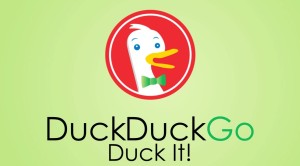Task 1 – Evaluate search results.
Year 8 students have just started a unit on the Renaissance so I have chosen this as my search term.
Top of the list was Wikipedia – a quick look indicates that the language would be too difficult for most Year 8 students.
Second on the list was an Exhibits collection, most of which did not refer to the relevant Renaissance study. After this the list went directly to cosmetic clinics, computer companies, hotels etc.
On the R of the page under related searches there were some relevant links to Renaissance art, music, artists, man, architecture etc. The students would need to be aware to look here for further searches.
Clearly a more accurate, or advanced, search than just “renaissance’ would be preferable.
- 1. Meanings with links to cultural movements, art etc.
- 2. Costume
- 3. Wikipedia
The language in the first link was marginally more appropriate for Year 8s, but you soon end up at Wikipedia. The links on the R of screen go directly to Wikipedia, dictionary.com, Merriam Webster, and Simple English Wikipedia. This simple version of Wikipedia is definitely more student friendly. If they are going to end up at Wikipedia it may be useful for them to be aware of this site for their initial search.
- Advertisements (also on R of screen)
- Wikipedia
- New World Encyclopedia
- Simple English Wikipedia
- Local businesses
INSTAGROK
Service was unavailable on iPad
I am having trouble in Google getting the non-American site. Even when I put in google.com it immediately adds the .au and goes to the Australian version which doesn’t have the infograph or the voice options which I would like to use with students. I will check with our network managers to see if there is a reason for this.
Task 2 – Evaluating resources
My trusted website is the CSIRO site www.csiro.au
Using the CRAP method of checking a sites relevance I was able to determine:-
1. Currency – the site is on Twitter and was last used 33 minutes ago; the events page gives details of recent events in March and April. There rae regular media releases and podcasts.
2. Reliability – the kind of information detailed on the site includes recent discoveries, discusses their national impact, and includes an education section for students. There is also detailed information about partners of the CSIRO, research and up-to-date blogs. The content could be biased or merely opinion but in most cases is backed up with research outcomes, references and data, and also the ability to forward enquiries.
3. Authority – there is detailed information about all publications including background details and qualifications of researchers involved. There are no advertisements apart from details of publications etc available form the website or store.
4. Purpose – the purpose of the site is to give information about the work of the CSIRO both for the layman and academics. It can be accessed on a number of levels from students to PhD researchers. It is a welcoming and u ser friendly site
I actually found the CRAP formula very useful in guiding my thoughts when investigating the site. I tried to look at it from a couple of points of views – as a student looking for useable information in a language I could understand, and from a teacher’s point of view looking for reliable, relevant and up-to-date scientific information. I was unaware of the differences between google.com and google.com.au and now know how to find google.com. I really like using the knowledge graph.
I have added some tags to previous sites and now look forward to my reward of checking out ‘some really cool places to find and collect resources.’


